Alois is on the first floor of the historic Dallmayr building in Munich. This started as a small spice shop in the 1700, with the current building bought by business founder Alois Dallmayr in 1870. He built this up to be one of the largest delicatessens in Europe, with Dallmayr also owning a coffee brand that roasts over 80,000 tons of coffee a year with revenues over a billion euros. The business is still owned by the same family. Since October 2022 Max Natmessnig has running the Alois kitchen, taking over from Christoph Kuntz. Mr Natmessnig had previously worked at restaurants including Steirereck, Oud Sluis, Nomad and Brooklyn Fare. In the 2023 guide Alois was awarded two Michelin stars. Alois is the reincarnation of the previous restaurant on the site, Dallmayr, with a formal reopening in September 2018.
The Alois dining room seats up to 28 guests in two connected dining rooms, being served by seven chefs in the kitchen tonight. Tables are generously spaced and have no tablecloths, each one decorated by a single gerbera flower in a white vase. This is a tasting menu only format, priced at €285 (£247) for the food. The wine list had 862 labels and ranged in price from €34 to €7,600, with a median price of €184 and an average markup to retail price of a fraction under twice, which is a nice change from London. Sample references were Weingut Stefan Potzinger Tradition Sauvignon Blanc 2021 at €44 for a bottle that you can find in the high street for €16, Domaine Chidaine Montlouis sur Loire "Les Choisilles" 2019 at €88 compared to its retail price of €38, and Domaine Léon Barral Faugères Jadis 2015 at €90 for a wine that will set you back €31 in the high street. For those with the means there was 2.64 2011 at €780 compared to its retail price of €472, and Domaine Coche-Dury Corton Charlemagne Grand Cru 2015 at €3,400 for a wine whose current market value is €7061.
The first offering from the kitchen was a simple broth of fermented white asparagus, rather reminiscent of a miso soup. This was followed by a cylinder of trout tartare with horseradish as well as wasabi from Japan. The flavour of the trout was nicely lifted by the bite of spice (17/20). I also had tartlet of beef tartare from a Spanish dairy cow, with freshly whipped cream, caviar kombu and preserved black truffle. The pastry was delicate and the beef had plenty of flavour, the salinity of the caviar acting as a natural seasoning (18/20). The next canapé was nori tartlet with starweed (aka mouse-ear chickweed) and stracciatelle cheese, garnished with shiso leaf. The herb, from Italy, was briefly grilled over binchotan charcoal and the nori shell was very delicate (17/20).
This was followed by an unusual take on tamago, the Japanese rolled omelette, usually seasoned with a little soy, sugar and dashi, served traditionally at the end of a sushi meal. Here the omelette was crisped up as base, flavoured with aged mirin and topped with salmon caviar and dried egg yolk. This was certainly unusual but ultimately there is only so much excitement that can be generated from an omelet with salmon eggs (15/20). This was followed by a crisp tartlet of duck liver, frozen mango and passion fruit, with grated frozen liver. This worked really well, the fruit providing acidity to balance the richness of the levied, and the frozen grated liver giving a textural contrast (18/20).
At this point we were shown a display of the ingredients used in the meal, including langoustine from the Faroe Islands and caviar from a company called Aki. This has been a partner of Dallmayr for a century, and sources from various locations, such as oscietra from Poland, Beluga from Venice and baeri from France. The meal continued with Bavarian artic char tartare that had been brined and then blowtorched over binchotan charcoal, served with buttermilk foam and raw kohlrabi, with a garnish of black lime powder and chives. The fish had excellent flavour and the earthy, firm kohlrabi contrasted nicely with the fish, the lime bringing freshness (17/20).
This was followed by slices of abalone from Brittany on a base of Japanese koji rice, with a sauce flavoured with abalone liver, pickled kombu seaweed vinaigrette. The abalone was tender, which is no trivial task with this shellfish, and the potentially dominant liver flavour was subtle (17/20). For some reason there was now an extended gap before the next course of Portuguese squid with romesco sauce and palm heart with a consommé of squid and lemon oil and a garnish of white radish. This dish worked well, the squid tender and the sauce quite rich, the radish adding a pleasant earthy contrast (16/20).
Turbot from Brittany was dry aged and grilled over charcoal, served with a sauce made using the skirt of the fish, prawns and mussels, with a garnish of escabeche mussels and prawns. The turbot could have been a touch warmer when it arrived but had good flavour, and the sauce was rich and enjoyable (16/20). This was followed by a chawanmushi, a savoury custard, of langoustine flavoured with nam prik Thai chilli sauce and pandan leaf, along with a grilled langoustine tail and tips of green asparagus. The langoustine had good natural sweetness and the touch of spice from the nam prik nicely lifted the flavour without overwhelming the delicate shellfish, while the asparagus was also very good. (17/20).
Maitake mushrooms from an indoor farm in Germany were served with pearl onion rings, morels, grapes and truffle essence. The maitake itself was rather dull, but the broth flavoured with morels was good. Why on earth would you take a superb mushroom like morel and demote it to flavour a broth, and elevate the humble and bland cultured maitake mushroom to be the main element? I can imagine this dish working so much better with morel as the main featured mushroom (just about 15/20).
There was now a palate cleanser of Thai basil with dill, tarragon and lemongrass foam with vanilla powder, topped with a few drops of rum from the Dominican Republic. This was refreshing enough, though I am not sure this herbal concoction works as well as a more traditional palate cleanser such as champagne or grapefruit sorbet (15/20). Venison was from a deer from a farm north east of Munich, served with ragu made from the shoulder of the deer, deer emulsion, blood sausage cream and a garnish of almonds, The venison had very good flavour and the almonds were a nice touch (17/20).
In place of a cheese board was a dish of Mimolette cheese from Lille and Bleu d’Auverge from central France, served with preserved black truffle and a little aged balsamic vinegar from Modena. This was all very pleasant, the blue cheese being in good condition. An initial dessert was based on three different varieties of strawberry, from a mix of sources in France and Germany. Strawberries were braised and served with a dill parfait and dill mousse, offered with a fermented strawberry foam and a crisp sesame crisp. I have never been a fan of shrubbery in desserts and dill, lovely though it may be with a savoury course of salmon, is quite a strong flavour that rather dominated this dish. It was technically well made but I wonder how many people would rather have had, say, a strawberry ice cream in place of the pungent hedgerow taste of dill (14/20). FujiSan “bread coconut” was a kind of brioche crossed with a croissant that looked like a doughnut. This was served with coconut ice cream flavoured with arguably too much fleur de sel. The bread itself was warm and had lovely texture, a very enjoyable and comforting dessert, which was a contrast with its very modern preceding dish (17/20).
Coffee was a blend from the Dallmayr coffee company and was very pleasant, though given the resources here I would have thought that offering a menu of coffee choices might be feasible. The pace of the meal was erratic. Initial courses arrived at a steady and comfortable pace, but after the abalone there was a long gap, and from that point there were some oddly lengthy gaps between courses. It is hard to explain the sixteen-minute wait between the dessert courses, or the seventeen-minute wait for the turbot course, or the 26-minute gap before the langoustine course. The meal took over four hours elapsed, so this was quite a leisurely experience. Wine topping up was initially good and then seemed to be distracted for a period, so my wine glass ended up empty for quite long periods on multiple occasions. A first world problem for sure, but one that should not really happen in a Michelin starred restaurant. The front of house service was led by the wife of the chef, who was originally from Tucson in Arizona and met Max when working at Nomad in New York. She was charming, and the waiting staff were all friendly. I was unable to get a bill, but if you shared a modest bottle of wine between two then a typical cost per person might come to around €325 (£282) per head. Overall Alois offers a very enjoyable, albeit quite lengthy, experience, the kitchen showing very good technique and using high class ingredients.
























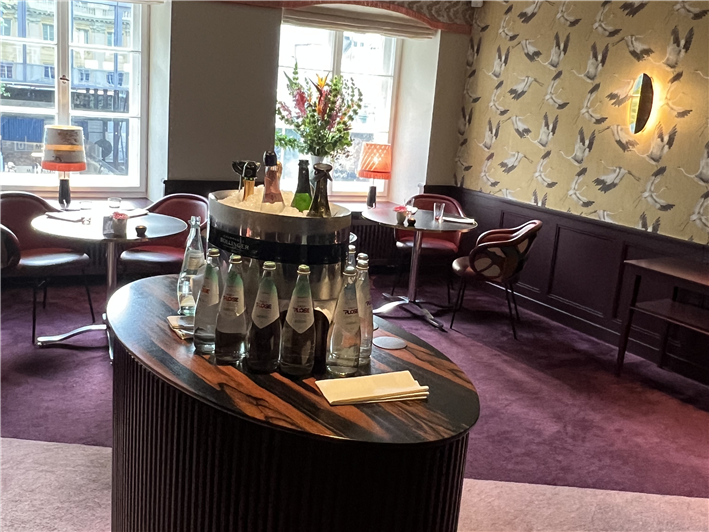
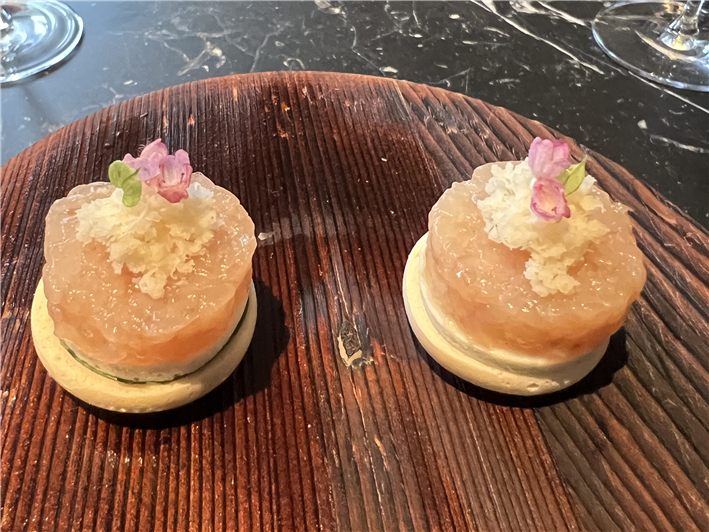
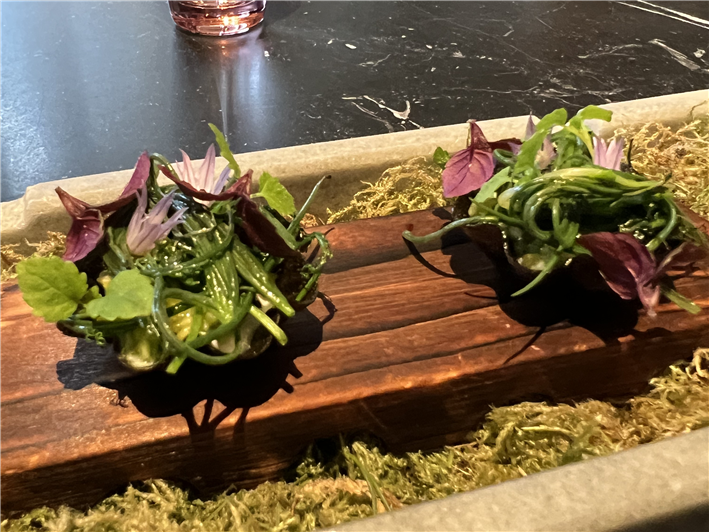

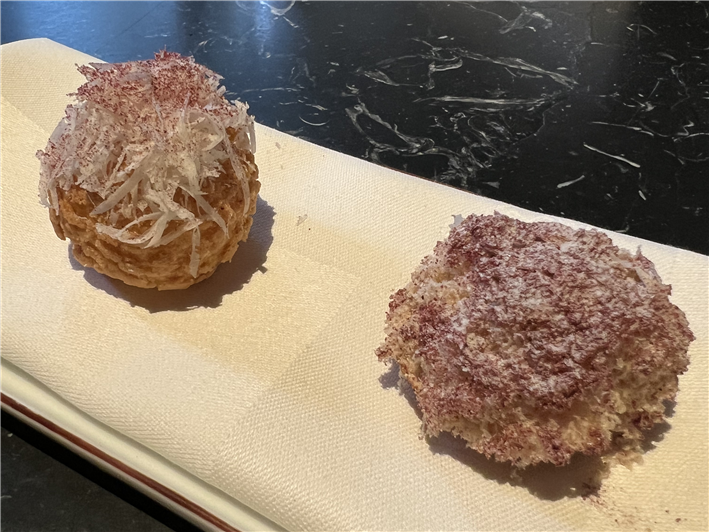
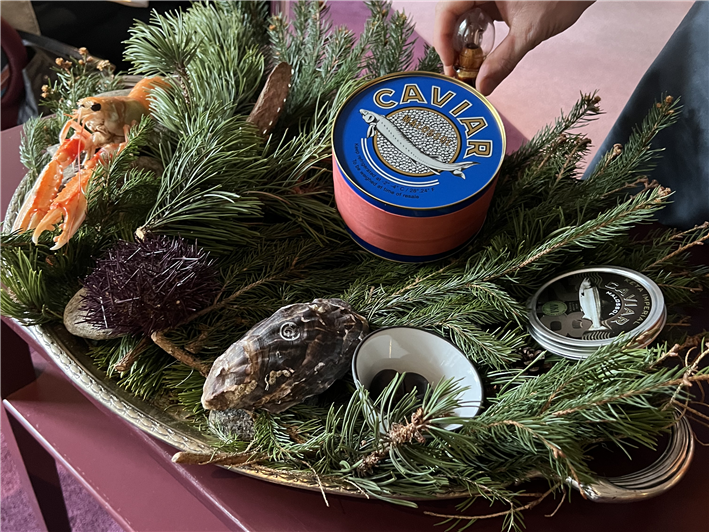
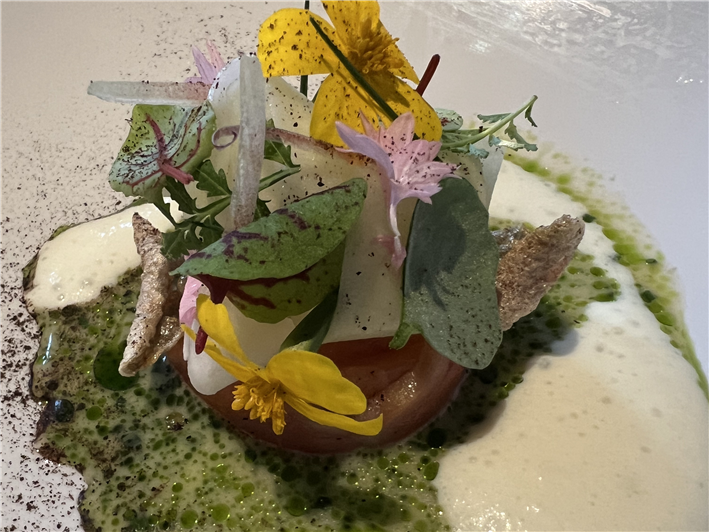
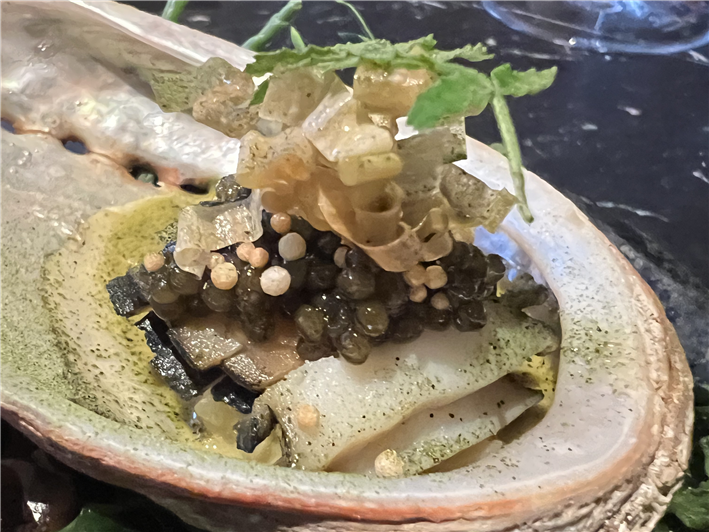

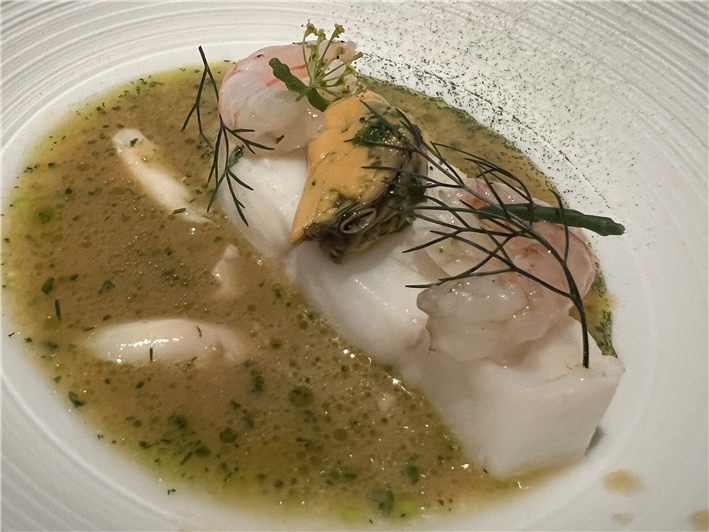
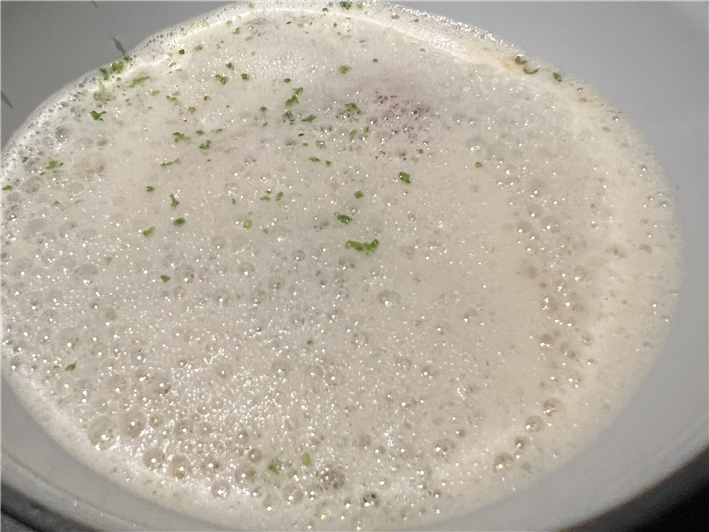
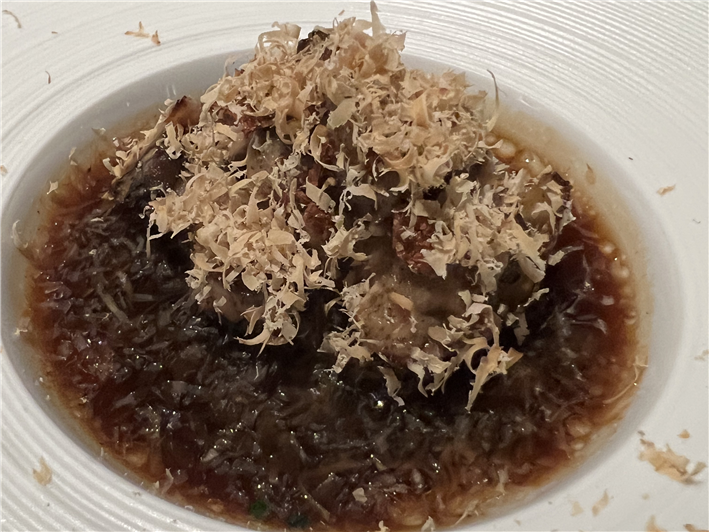
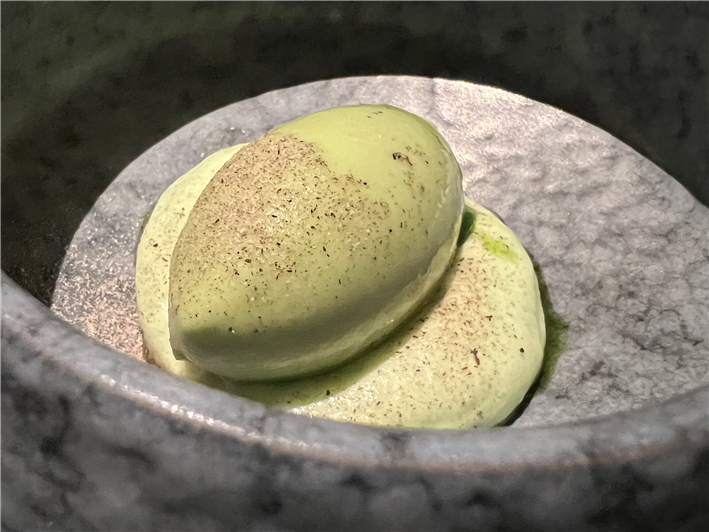
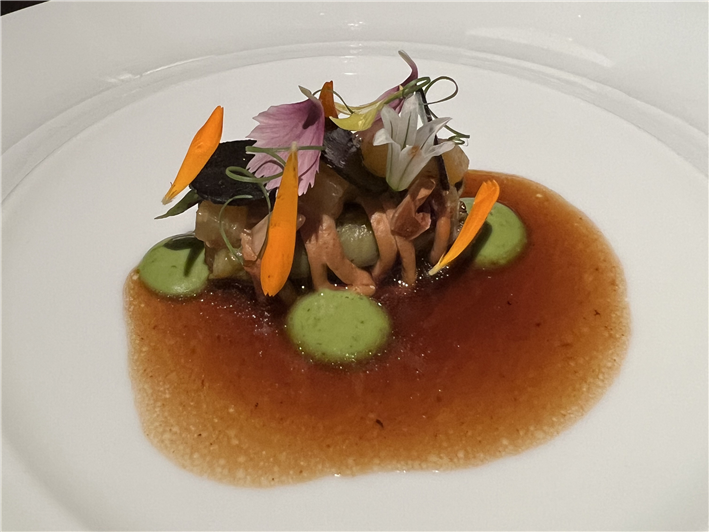
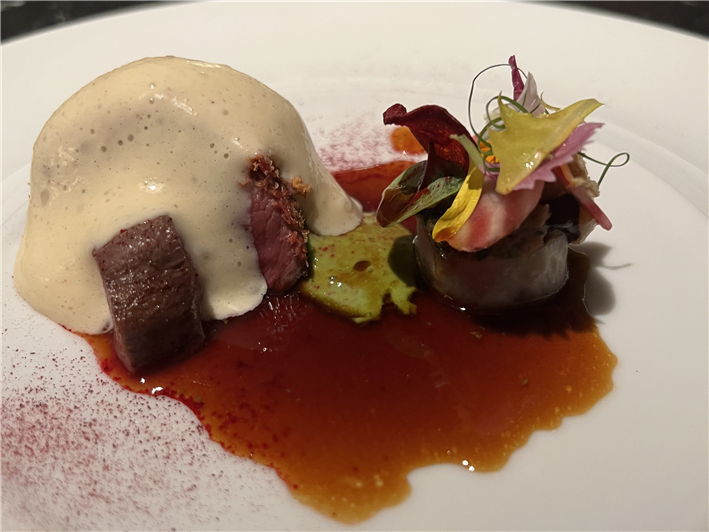
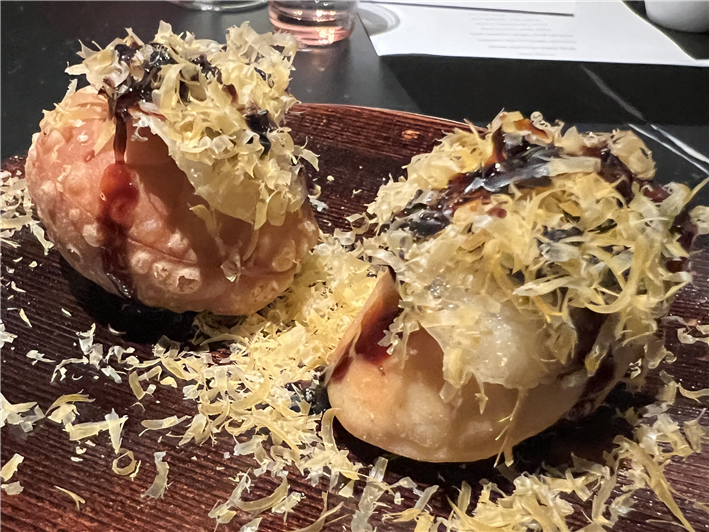
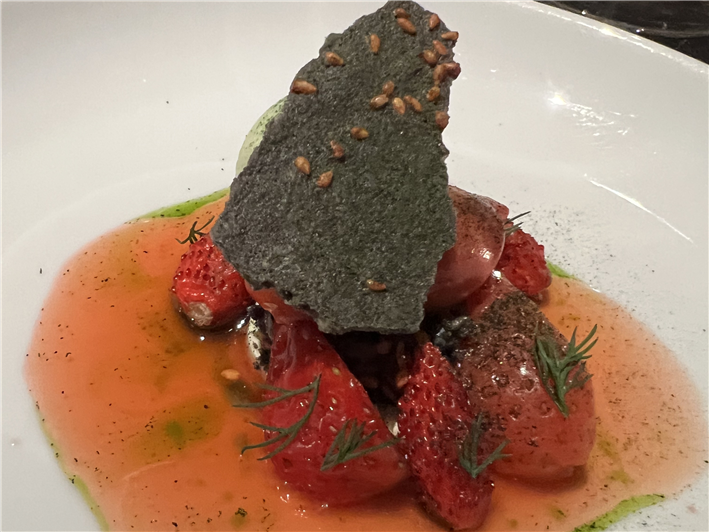
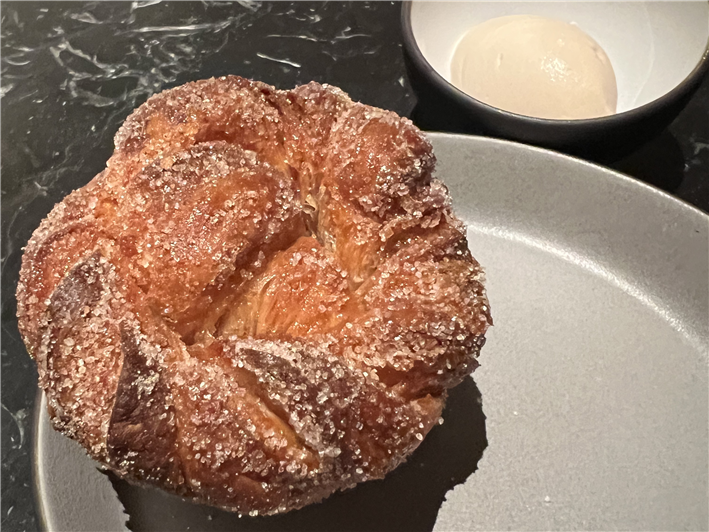


Add a comment
Thank you for submitting your comment, this will be checked and added to the website very soon.
User comments